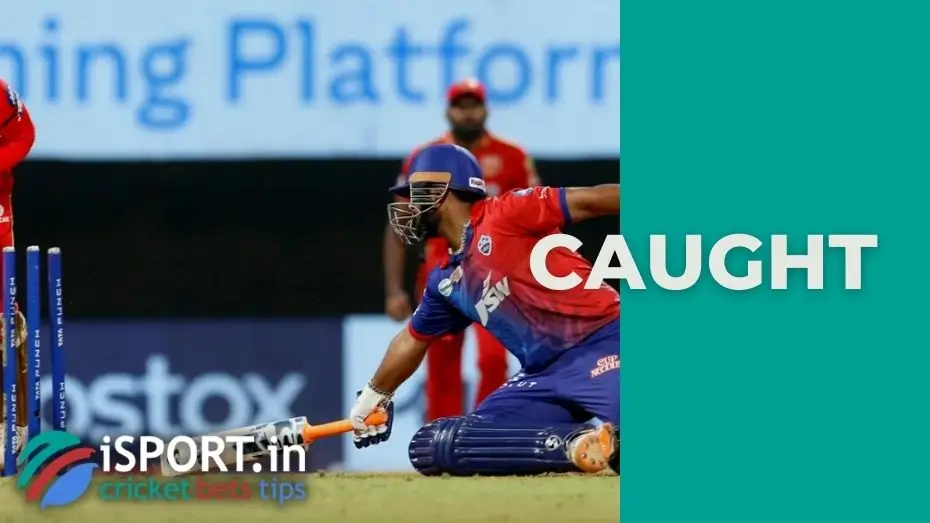Caught

Today, in cricket championships, there are different ways to exclude a batsman from the game. To do this, you need to catch the ball correctly when it is hit with the bat. The most common removal of a batsman is when a fielder catches the ball immediately in his hands, without letting it bounce off the ground. Then the player with the bat is considered caught. Of course, there are other ways in which a batsman will finish his game. Read more about this in our prepared material.
Caught
“Caught” in cricket means that the current batsman stops hitting balls and leaves the field (he has lost). As noted above, if a fielder catches the ball before it falls to the ground when hitting the batsman, the batsman is considered caught.
There are other commands that mean that a batsman has stoped his game. For example, if a batsman hits a ball from a bowler, and the wicket-keeper cathes it, the batsman will be called “caught behind” or “caught at the wicket“.
Very rarely in cricket competitions, there is such a catch as ‘caught and bowled“. This happens when the bowler serves the ball to the batsman, and he also catches it on an unsuccessful strike. Indeed, the words “caught and bowled” give the impression that it is a very difficult catch.
It is logical to assume that the easiest way to exclude a player with a bat from the game is to take the ball away to catch the batsman. According to statistics (albeit not quite relevant), there were 36,190 such catches in test matches from 1877 to 2012. In the ratio, this is 56.9 % of all exceptions of a player with a bat.
Mark Boucher is a former professional wicket-keeper from Thought Africa at the moment; in the period from 1997-2012, he was able to take 532 “caught behind” catches – this is the current world record. Unfortunately, in 2012, an unpleasant episode happened with Mark during a match, in which the ball flew into his left eye (he was without glasses and a protective helmet). After this, the player had two eye surgeries, and Mark Boucher ended his career ahead of schedule.
If Mark is the record holder as a wicketkeeper, then Rahul Dravid is the best in cathes. In the the same period, he was able to catch 210 balls that did not touch the ground! This is a very excellent result.
Quite often, there are controversial moments in cricket. This also applies to catches. Here is a list of cases when a batsman is considered not to be caught:
- The ball is called no-ball or dead ball. If the two terms are considered in 2 words, then no-ball is when the bowler serves incorrectly (from the wrong place or the ball rolls on the ground after the throw, or the ball is dangerous for hitting). And for “dead ball” there are its own criteria, which you can find on our website. A dead ball is almost any command given by the judge. It means that at this moment, all actions in the game are not counted;
- The batsman does not hit the ball with the bat, but with another part of the body;
- After the kick, the ball initially touches the ground, and then it falls into the hands of the fielders;
- The ball flies out of the field and stays there;
- A fielder, catching the ball, steps in or crosses the boundaries of the playing area.
Nowadays, if a batsman is really considered caught, the bowler is credited with the wicket the batsman was defending, and the catcher is credited with a cricket catch. With an obvious catch, the batsman leaves the field without dispute. But in the case when there are controversial moments on the part of a player with a bat and he is not sure that he is considered caught, then the team submits an appeal to the match referee. In turn, the judge has the right to use a television assistant who will judge this episode when watching a thorough video replay.
By the way, until 2000, according to the Laws of cricket, a player with a bat was considered caught when a fielder completely controlled the ball. In a very rough form, this meant that if a player caught it, then he should give the ball to the bowler for the next draw. For this reason, today, to show the referee that the ball is under the control of a fielder, it is thrown up (at the same time, the fielders celebrate the winning draw).
Read even more useful and interesting information in the sections of our website!
